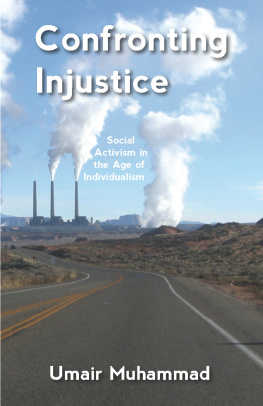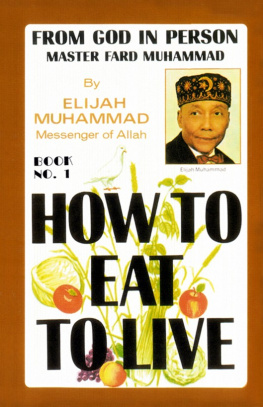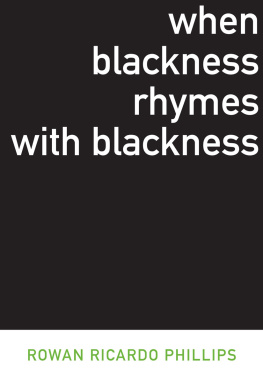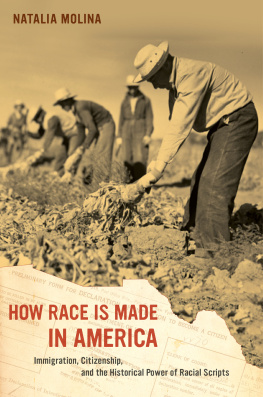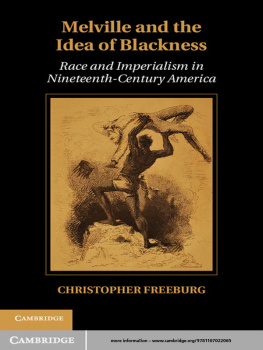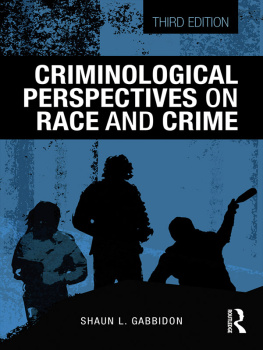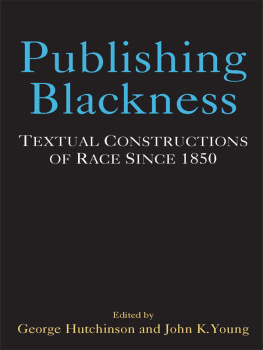Muhammad - The condemnation of blackness race, crime, and the making of modern urban America
Here you can read online Muhammad - The condemnation of blackness race, crime, and the making of modern urban America full text of the book (entire story) in english for free. Download pdf and epub, get meaning, cover and reviews about this ebook. City: Cambridge;Massachusetts, year: 2011, publisher: Harvard University Press, genre: Art. Description of the work, (preface) as well as reviews are available. Best literature library LitArk.com created for fans of good reading and offers a wide selection of genres:
Romance novel
Science fiction
Adventure
Detective
Science
History
Home and family
Prose
Art
Politics
Computer
Non-fiction
Religion
Business
Children
Humor
Choose a favorite category and find really read worthwhile books. Enjoy immersion in the world of imagination, feel the emotions of the characters or learn something new for yourself, make an fascinating discovery.

- Book:The condemnation of blackness race, crime, and the making of modern urban America
- Author:
- Publisher:Harvard University Press
- Genre:
- Year:2011
- City:Cambridge;Massachusetts
- Rating:4 / 5
- Favourites:Add to favourites
- Your mark:
- 80
- 1
- 2
- 3
- 4
- 5
The condemnation of blackness race, crime, and the making of modern urban America: summary, description and annotation
We offer to read an annotation, description, summary or preface (depends on what the author of the book "The condemnation of blackness race, crime, and the making of modern urban America" wrote himself). If you haven't found the necessary information about the book — write in the comments, we will try to find it.
Muhammad: author's other books
Who wrote The condemnation of blackness race, crime, and the making of modern urban America? Find out the surname, the name of the author of the book and a list of all author's works by series.
The condemnation of blackness race, crime, and the making of modern urban America — read online for free the complete book (whole text) full work
Below is the text of the book, divided by pages. System saving the place of the last page read, allows you to conveniently read the book "The condemnation of blackness race, crime, and the making of modern urban America" online for free, without having to search again every time where you left off. Put a bookmark, and you can go to the page where you finished reading at any time.
Font size:
Interval:
Bookmark:
THE CONDEMNATION OF BLACKNESS
THE CONDEMNATION OF BLACKNESS
RACE, CRIME, AND THE MAKING OF MODERN URBAN AMERICA
Khalil Gibran Muhammad
HARVARD UNIVERSITY PRESS
Cambridge, Massachusetts
London, England
2010
Copyright 2010 by the President and Fellows of Harvard College
All rights reserved
Jacket art: Jacob Riis/Museum of the City of New York
Jacket design: Jill Breitbarth
The Library of Congress has cataloged the printed edition as follows:
Muhammad, Khalil Gibran, 1972
The condemnation of blackness : race, crime, and the making of modern urban America / Khalil Gibran Muhammad.
p. cm.
Includes bibliographical references and index.
ISBN 978-0-674-03597-3 (alk. paper)
1. Crime and raceUnited States. 2. African AmericansSocial conditions. 3. Discrimination in criminal justice administrationUnited States. 4. United StatesRace relations. I. Title.
HV6197.U5M85 2010
364.2'56dc22 2009014930
For Stephanie, Gibran, Jordan, and Justice, and for my parents, Ozier and Kimberly
CONTENTS
Introduction:
Conclusion:
INTRODUCTION:
This book tells an unsettling coming-of-age story. It is a biography of the idea of black criminality in the making of modern urban America. The link between race and crime is as enduring and influential in the twenty-first century as it has been in the past. Violent crime rates in the nations biggest cities are generally understood as a reflection of the
How was the statistical link between blackness and criminality initially forged?
In 1928 Thorsten Sellin, one of the nations most respected white sociologists, argued that African Americans were unfairly stigmatized by their criminality. His article, The Negro Criminal: A Statistical Note, captured the moment when nearly four decades of statistical research on black criminality began oppression in modern America:
We are prone to judge ourselves by our best traits and strangers by their worst. In the case of the Negro, stranger in our midst, all beliefs prejudicial to him aid in intensifying the feeling of racial antipathy engendered by his color and his social status. The colored criminal does not as a rule enjoy the racial anonymity which cloaks the offenses of individuals
Sellins we, linked to the notion of the Negro as a stranger in our midst, marked not only his whiteness but also and more importantly, his position within a dominant racialized community with the power to define those outside it. That same power, Sellin implied, could be used to break with the pastto change the future of race relationsbecause crime itself was not the core issue. Rather, the problem was racial criminalization: the stigmatization of crime as black and the masking of crime among whites as individual failure. The practice of linking crime to blacks, as a racial group, but not whites, he concluded, reinforced and reproduced racial inequality.
The issue here was not whether crime was real. Instead, what struck Sellin as the key variable to expose and contextualize was
The Condemnation of Blackness reconstructs the key moments, beginning one generation after slavery, when new sources of statistical data were joined to ongoing debates about the future place of African Americans in modern urban America. With the publication of the 1890 census, prison statistics for the freedom and was, consequently, a much-anticipated data source for assessing blacks status in a post-slavery era.
New statistical and racial identities forged out of raw census data showed that African Americans, as 12 percent of the population, made up 30 percent of the nations prison population. Although specially designed race-conscious laws, discriminatory punishments, and new forms of everyday racial surveillance had been institutionalized by the 1890s as a way to suppress black freedom, white social scientists presented the new crime data as objective, color-blind, and incontrovertible. Neither the dark color of southern chain gangs nor the pale hue of northern police mattered to the truth of black crime statistics.
From this moment forward, notions about blacks as criminals materialized bases for justifying prejudicial thinking, discriminatory treatment, and/or acceptance of racial violence as an instrument of public safety.
Tracing the emergence and evolution of the statistical discourse on black criminality sheds new light on the urban North as a crucial site for the production of modern ideas about race, crime, and punishment. On the one hand, the dominant historical narratives
At the dawn of the twentieth century, in a rapidly industrializing, urbanizing, and demographically shifting America, blackness was refashioned through crime statistics. It became a more stable racial category in opposition to whiteness through racial criminalization. Consequently, white criminality gradually lost its fearsomeness. This book asks, how did European immigrantsthe Irish and the Italians and the Polish, for examplegradually shed their criminal identities while blacks did not? In other words, how did criminality go from plural to singular?
By examining both immigrant and black crime discourses in the urban North as they
Whiteness scholars have shown how crucial the attributes of skin color, European ancestry, and the gradual adoption of anti-black racism were to immigrant assimilation into the singular white race. Consequently, the black southern migrantthe Negro, stranger in our midstwas marked as an exceptionally dangerous newcomer.
One of the strongest claims this book makes is that statistical comparisons between the Foreign-born and the Negro were foundational to the emergence of distinctive modern discourses on race and crime. For all the ways in which poor Irish immigrants of the mid-nineteenth
Similar comparisons would echo for the rest of the twentieth century. The Progressive era was indeed the founding moment for the emergence of an enduring statistical discourse of black dysfunctionality rather than the 1960s, as Inextricably linked at birth, they grew up together.
Northern black crime statistics and migration trends in the 1890s, 1900s, and 1910s were woven together into a cautionary tale about the exceptional threat black people posed to modern
What else
One explanation for the staying power of black crime rhetoric is that it had far more proponents than opponents compared to other racial concepts. in an increasingly violent and enduring contest over racialized space in the urban North.
To be sure, racial liberalsa subset of white progressivespushed back against the rising tide of northern segregation, discrimination, and violence during the Progressive era.
Black crime researchers and reformers in fact contributed to and drew inspiration from the cultural discourse on crime. Many black elites had embraced Victorian ideals of morality and respectability in the late nineteenth and early twentieth centuries, often trumping their white elite counterparts
For some African American writers and reformers, black criminality was a passport to relevancy in a wider white world in which black voices were actively suppressed.
Progressive era black social scientists and reformers also exposed and challenged the limits of racial liberalism long before the post-World War II failures of residential and workplace integration in the urban
Beyond their own need to distinguish themselves from social and cultural inferiors, black reformers noted time and time again that the stigma of criminality fell most heavily on the most disadvantaged, isolated, and neglected people of the urban North. As they saw it, the Progressive era discourse of black criminality was at its best a self-serving justification for segregation and black self-help even as its proponentswhite eliteshelped Europes huddled masses by advocating for social welfare agencies, recreation facilities, better policing, economic fairness, and an end to political corruption. At its worst, the stigma of criminality was an intellectual defense of lynching, colonial-style criminal justice practices, and genocide.
Next pageFont size:
Interval:
Bookmark:
Similar books «The condemnation of blackness race, crime, and the making of modern urban America»
Look at similar books to The condemnation of blackness race, crime, and the making of modern urban America. We have selected literature similar in name and meaning in the hope of providing readers with more options to find new, interesting, not yet read works.
Discussion, reviews of the book The condemnation of blackness race, crime, and the making of modern urban America and just readers' own opinions. Leave your comments, write what you think about the work, its meaning or the main characters. Specify what exactly you liked and what you didn't like, and why you think so.

